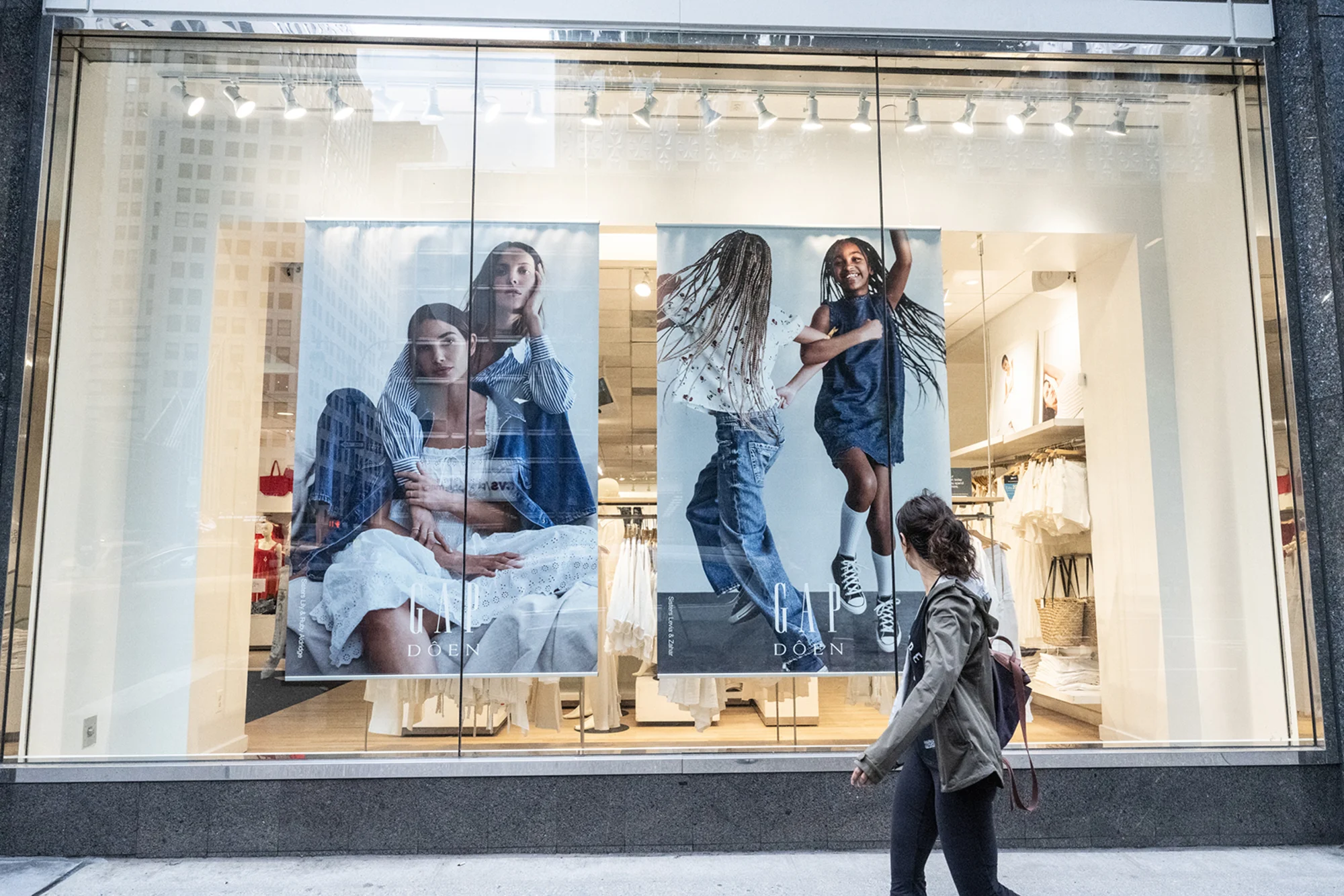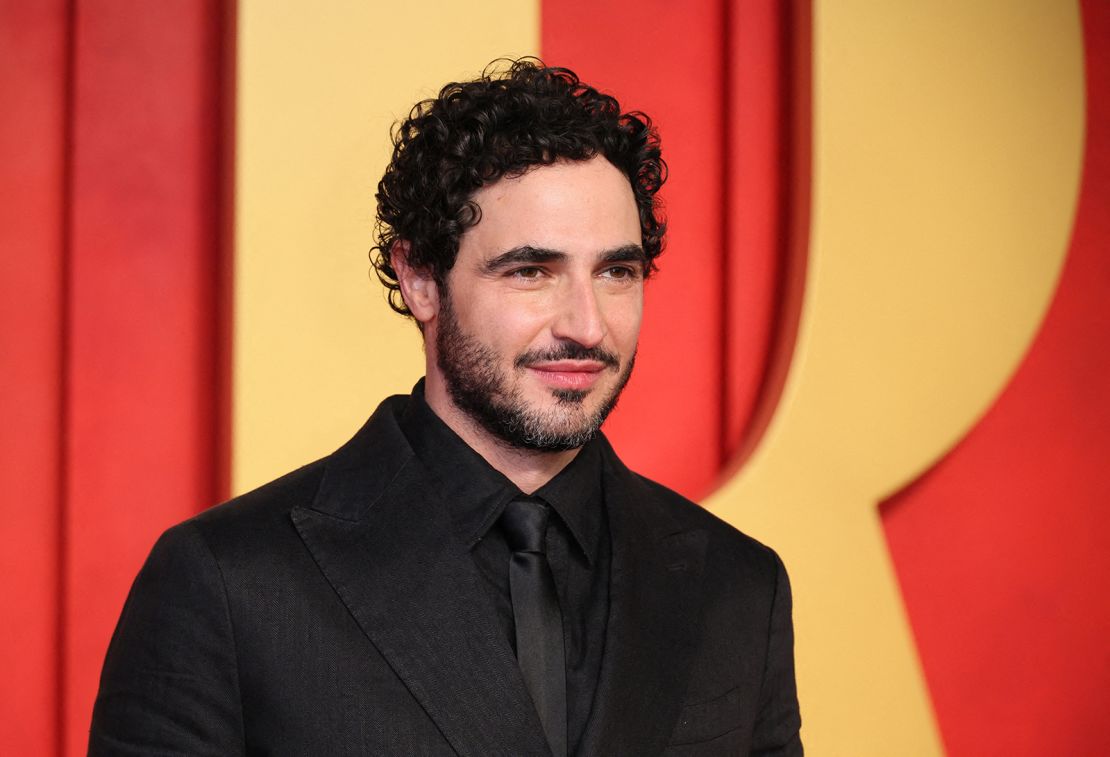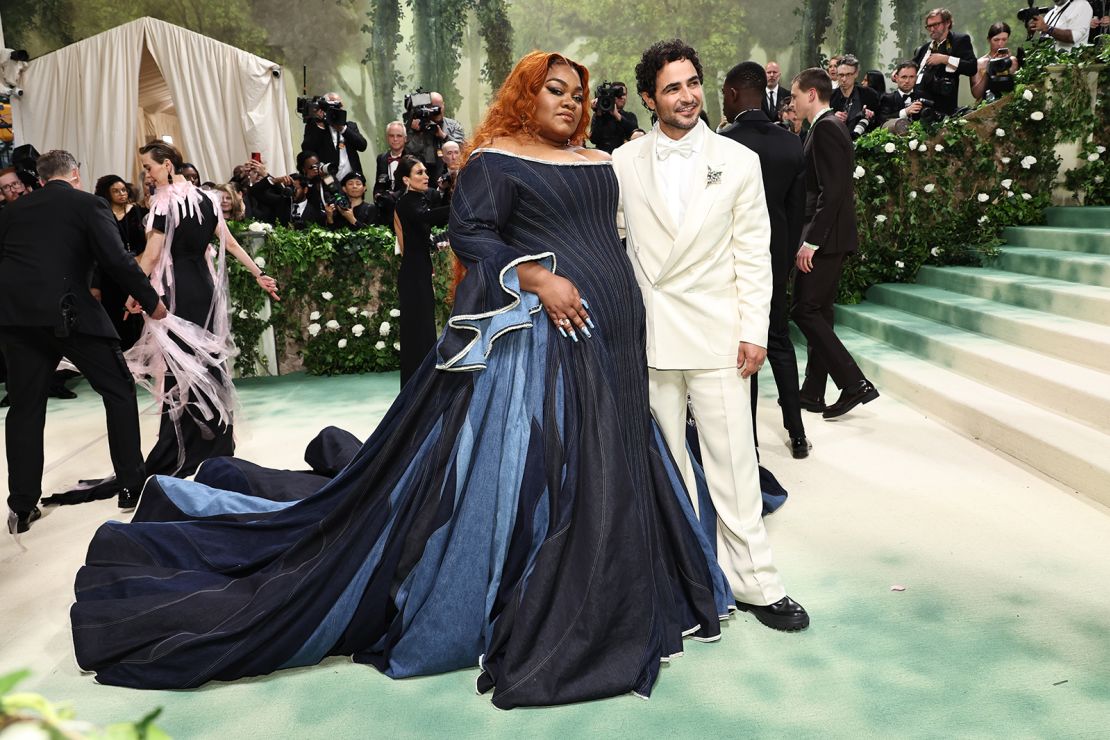“When you do word association with Zac Posen, ‘casual’ doesn’t come up,” Gilhart adds. “It was an unusual choice. No one would’ve expected it.”
Posen is perhaps just as much of a long shot as his predecessors. But the narrative symmetry between Posen the former prodigy who lost his way and Gap the once-iconic, now-ailing behemoth is undeniable — and for Dickson, a major selling point.
“The dialogue around Zac’s journey and our brands’ journey is very integrated,” Dickson says. “It creates thick skin and you can tolerate the challenges of turning a business around.”
Corporate chemistry
When Posen received the phone call from Dickson last autumn, he was still in a prolonged state of recovery. After his company dissolved, he had time to relax and work on personal projects. He went to see shows at the theatre. He began taking on private commissions again, including gowns and bridalwear, starting with a dress for Bernadette Peters, one of his earliest clients from his student days.
“I was in an incredibly reflective and valuable moment in my life, personally and professionally that I hold very sacred,” Posen says.
When the pandemic hit, he was happy to stay home to cook and garden. He was commissioned by the New York City Ballet, whose former-principal dancer Harrison Ball is Posen’s now fiancé́, and then by director Ryan Murphy to costume a part of the TV show “Feud: Capote vs. the Swans.”
Posen was also disillusioned with fashion and fashion was disillusioned with him. After all, the kingdom of fashion that had welcomed him with an open embrace eventually spat him out. He toyed with going into cinema or becoming a Disney Imagineer. Then he met Dickson.
It was a warm afternoon in late October. The two had spoken on the phone and agreed to meet at Balthazar, a popular bistro in New York’s SoHo neighborhood. Posen felt familiar eyes on him as he walked into the bustling restaurant. “I was like, ‘Oh, no, we’re gonna get clocked immediately,’” he says.
Dickson had been chief executive of Gap Inc. for just shy of four months. He was taking on the white whale of American retail, one of the largest specialty fashion chains in North America in terms of footprint (behind only TJ Maxx and its sister stores), which had seen a revolving door of CEOs in the past decade, each failing to execute on their respective visions to turn the business around.
This time around, when searching for the right creative partners, Dickson cast a wide net. When he met Posen, he was in conversation with several other candidates, including creatives outside of fashion.
Posen’s first impression of Dickson was that he was an elegant-looking man, a crossover between a rockstar and a Kennedy. The rest, he says, “was kismet.”
The two instantly connected over what they see as the power of creative expression, of product and communication, and a mutual belief that a brand can have a bigger purpose.
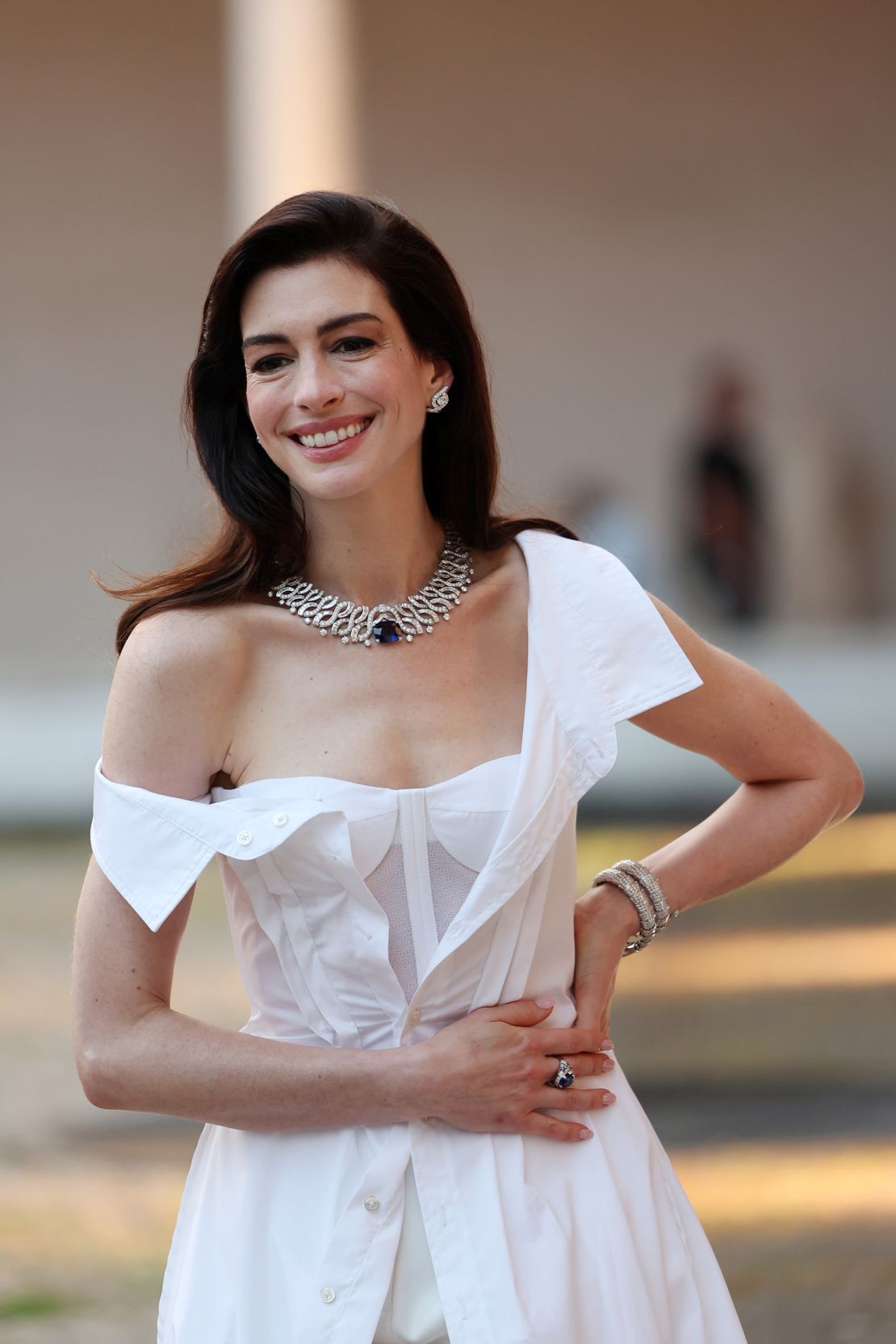
“The lightbulb moment for Zac was that these brands are canvases for creativity on such a massive scale,” says Dickson. Like Posen, he speaks of Gap and the work they’re doing together — the work of, ultimately, selling clothes — in grandiose terms, alluding to the idea that their company could perhaps change the world.
“A brand is about bringing together people,” Posen says. “If you can leave the world an ounce of a better place, that’s what it’s about.”
But alongside the big thinking, Dickson was drawn to Posen’s humility. “The recognition that he had experienced the peaks, the pits and the process in between,” he adds. “Now think about Gap. Gap peaked and Gap (tumbled). All the trials and tribulations these brands had gone through.”
The affinity was reciprocal. After their chat, Posen was electrified, he recalls. His 43rd birthday party had been that same night, on the Lower East Side. “Everyone was like, what’s going on?” he recalls. “People could physically just see that I was excited about something.”
Two weeks later, Posen flew to San Francisco to meet Gap Inc.’s board of directors, including Robert and William Fisher, sons of the company’s founders. He snuck out after hours from an elevator shaft the building to keep the interview a secret, and when he returned three months later, he had already been handed the creative reins. “I accepted the job and didn’t really know what to expect,” he says.
But Dickson was the “business partner that I had only ever dreamt of meeting in my life,” Posen adds. And together, they set out to find Gap Inc.’s purpose again.
Early innings
Traveling back and forth from New York with his fiancé́, the designer got to work. Together with the rest of the company’s senior leadership team, which includes Gap CEO Mark Breitbard, Old Navy CEO Horacio Barbeito and Athleta CEO Chris Blakeslee, Posen joined the effort to sharpen the identities of the four brands in Gap Inc’s portfolio.
They started by redefining the positioning of each brand: Gap as a pop culture brand. Old Navy as an affordable style authority for America. Banana Republic as a lifestyle brand for the modern explorer. And Athleta, a performance brand amplifying the “Power of She,” the name of its athlete ambassador program with its own philanthropy arm addressing female empowerment.
Posen then set about trying to bring these repolished identities to life. His team commissioned a flurry of creative agencies, including Collins Group, which is spearheading the Old Navy rebrand that will come to life later this year. He made a meticulous marketing schedule, overseeing every activation across the portfolio, from opportunities around national holidays to store openings. He lent his creative eye to Banana Republic’s redesign of its SoHo flagship in June, and tapped longtime American Vogue editor Tonne Goodman to style its fall collection.
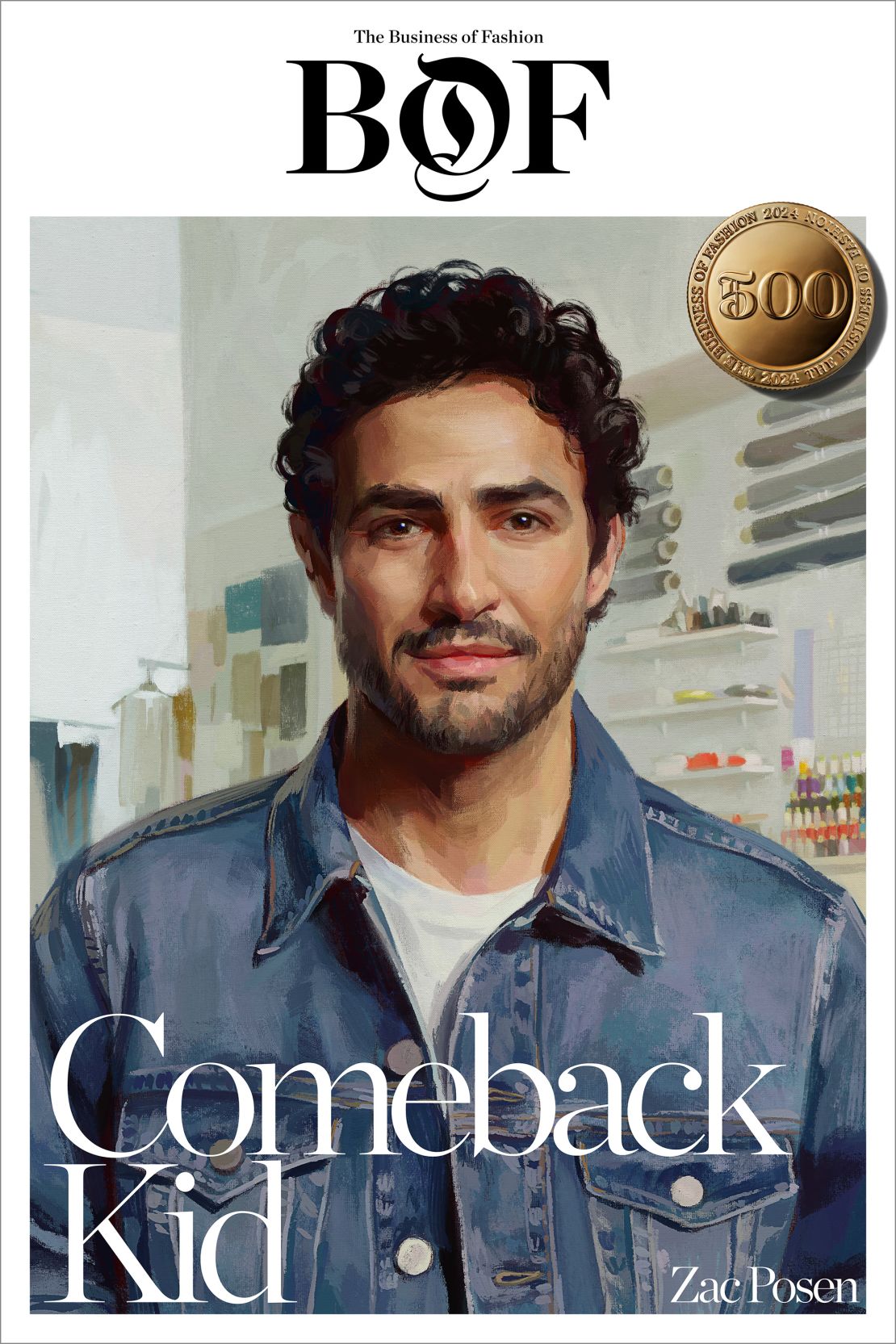
But most impactful has been his hand in engineering major cultural moments for Gap, from the dramatic draped denim gown he designed for Da’Vine Joy Randolph’s Met Gala appearance to the brand’s recent Troye Sivan campaign promoting its line of baggy jeans, which put a modern twist on the dancing ads that helped made Gap buzzy in the ‘90s and ‘00s.
Last month, Old Navy provided the T-shirts worn at a voter registration rally hosted by the Council of Fashion Designers of America and Vogue during New York Fashion Week.
There was also the white corseted shirt dress Posen created for Hathaway, which she wore at a Bulgari event in Rome a day after the Met Gala. Three months later, the dress made headlines once again when it was photographed on New York it-girl Julia Fox, who paired it with a lime green hat.
There’s no doubt that Posen has been instrumental in creating some big moments for Gap Inc. this year. Whether he will be able to improve Gap Inc.’s product assortment — particularly at Old Navy, for which he serves as chief creative officer — remains to be seen. A full reflection of Posen’s influence on products won’t be seen until the holiday season, but there are certain pieces so far for which he can take particular credit: a rainbow striped T-shirt in Old Navy’s recent vintage-inspired capsule collection, a dramatic version of barrel-legged jeans for Gap.
“This is really the beginning and I feel so premature with all of this, but we are in the cultural conversation and the brand is being spoken about,” Posen says. “On top of that, we are slowly but surely bringing the product back to relevance.”
There are early signs of commercial success: So far this year, Gap Inc. has reported two consecutive quarters of year-over-year sales growth. Of its four brands, only Athleta saw a significant sales decline in its second quarter ending Aug. 3. In terms of cultural reach, Gap Inc. seems to be making inroads: for example, Gap saw a 73% increase year-on-year in influencer mentions in the two months following the launch of its collaboration with Dôen in May, according to influencer marketing platform Traacker.
Gap’s shopping experience has improved, analysts say, pointing to more focused merchandising and better styling in stores and online alike. Discounting is also down, they note.
But some are still skeptical of Posen’s impact.
“To me, Zac Posen at Gap smells a little bit like Kanye 2.0,” says Lee Peterson, a retail veteran who worked for Gap’s competitor, The Limited, during its heyday in the 1990s. “He’s like a rockstar who had a bunch of big hits, but he hasn’t had a big hit in a long time.”
Posen says his success will be measured in “relevance and revenue” — the complete outcome of which will be greater than the sum of its parts.
“What’s the product and what’s the storytelling? How do we sell it? How do we become part of the conversation and grow the company and attract new customers and bring back old friends?” he says, listing his full roster of responsibilities at Gap Inc. in one breath. And then a pause. “It’s a marathon, not a sprint.”
Editor’s Note: This article was originally published by The Business of Fashion, an editorial partner of CNN Style.
